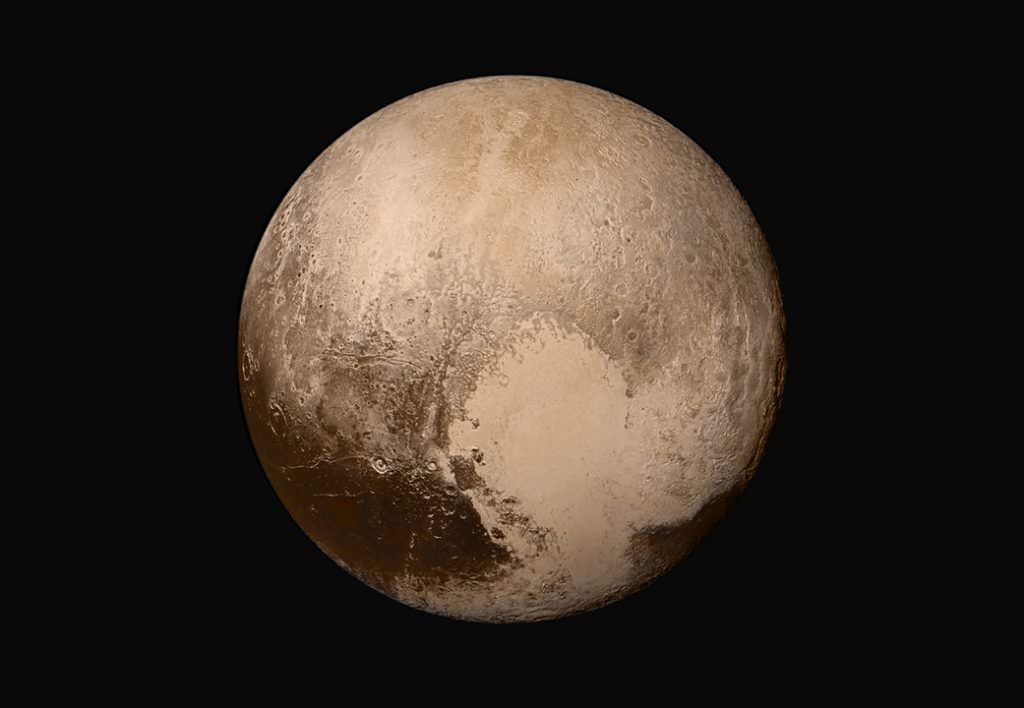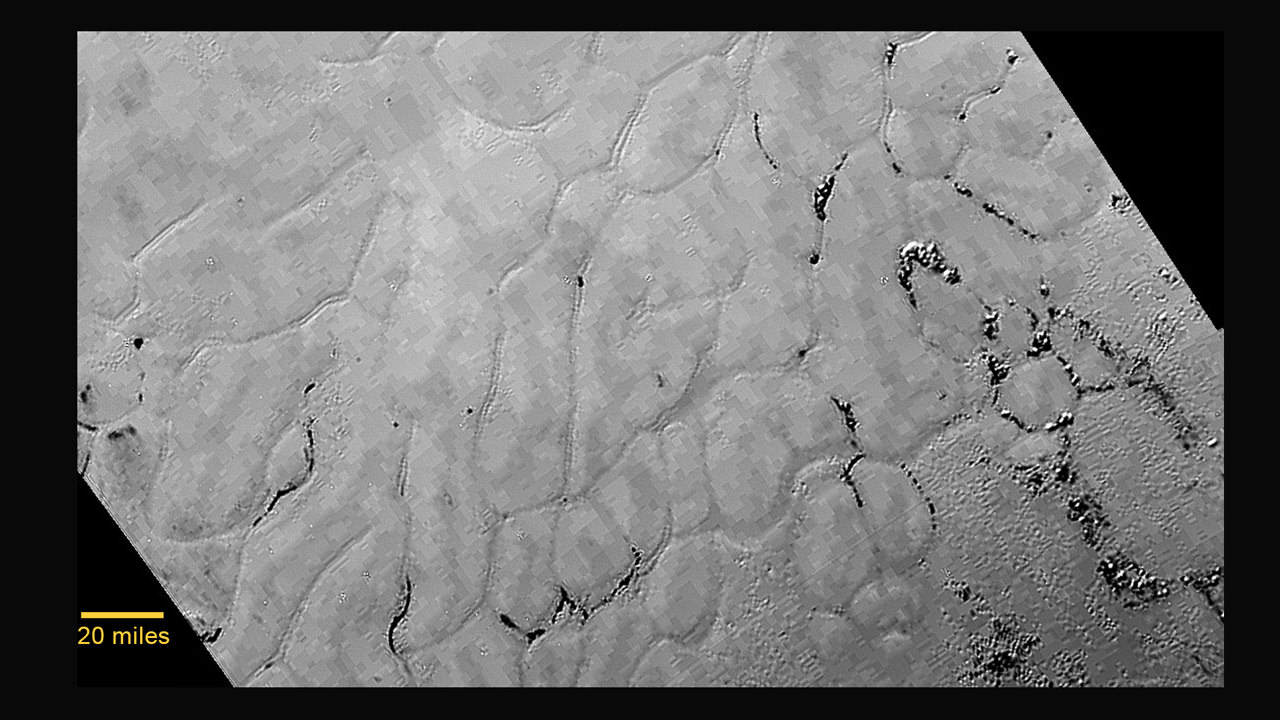After New Horizons made its close flyby of Pluto in July of 2015, scientists were astounded at the incredible closeup views of Pluto’s surface. One of the most intriguing and mysterious features was a bright plain inside the prominent heart-shaped feature on Pluto, called “Tombaugh Regio” (Tombaugh Region) named after Clyde Tombaugh, who discovered Pluto in 1930.
The region is composed of a broken surface of irregularly-shaped segments that appear to be geologically young because no impact craters are part of the terrain.
“This terrain is not easy to explain,” said Jeff Moore, leader of the New Horizons Geology, Geophysics and Imaging Team (GGI), back in 2015. “The discovery of vast, craterless, very young plains on Pluto exceeds all pre-flyby expectations. There are a few ancient impact craters on Pluto. But other areas like “Tombaugh Regio” show no craters. The landform change processes are occurring into current geologic times.”
Now, a new study of this fascinating landscape reveals with more certainty how the unusual features were formed. A team led by Adrien Morison from the University of Exeter in the UK used sophisticated modelling techniques to show that these ice polygons are formed by the sublimation of nitrogen ice. This is a phenomenon where the solid ice turns directly from the solid to the gas phase due to the extremely negligible atmospheric pressure.
“Pluto is still geologically active despite being far away from the Sun and having limited internal energy sources,” said Morison, in a press release. “The surface conditions allow the gaseous nitrogen in its atmosphere to coexist with solid nitrogen.”

The research team show this sublimation of the nitrogen ice powers convection in the ice layer of Sputnik Planitia by cooling down its surface. The team said this is consistent with numerous other data points from New Horizons – including the size of polygons, amplitude of topography and surface velocities.
The polygonal shaped areas are roughly 12 miles (20 kilometers) across.
The new study’s data is also consistent with the timescale at which climate models predict sublimation of the region, beginning around 1 – 2 million years ago. It showed that the dynamics of this nitrogen ice layer echo those found on Earth’s oceans, being driven by the climate.
Previous studies of Pluto’s polygons showed that the ice could be warmed by heat from the interior welling up in the center of cells, spreading and then sinking, creating the ridged margins. However, in the new paper, Morison’s team wrote, “Our proposed mechanism for the convective dynamics requires that the surface cooling be predominant over the heat flux at the bottom of the layer due to radiogenic heating in the rocky core and secular cooling/heating of the interior.”

The team said that climate-powered dynamics of a solid layer could also occur at the surface of other planetary bodies, such as Neptune’s moon Triton, or the Kuiper Belt objects Eris and Makemake.
The research was published in the journal Nature.
Paper: Sublimation driven convection in Sputnik Planitia on Pluto
University of Exeter press release.

